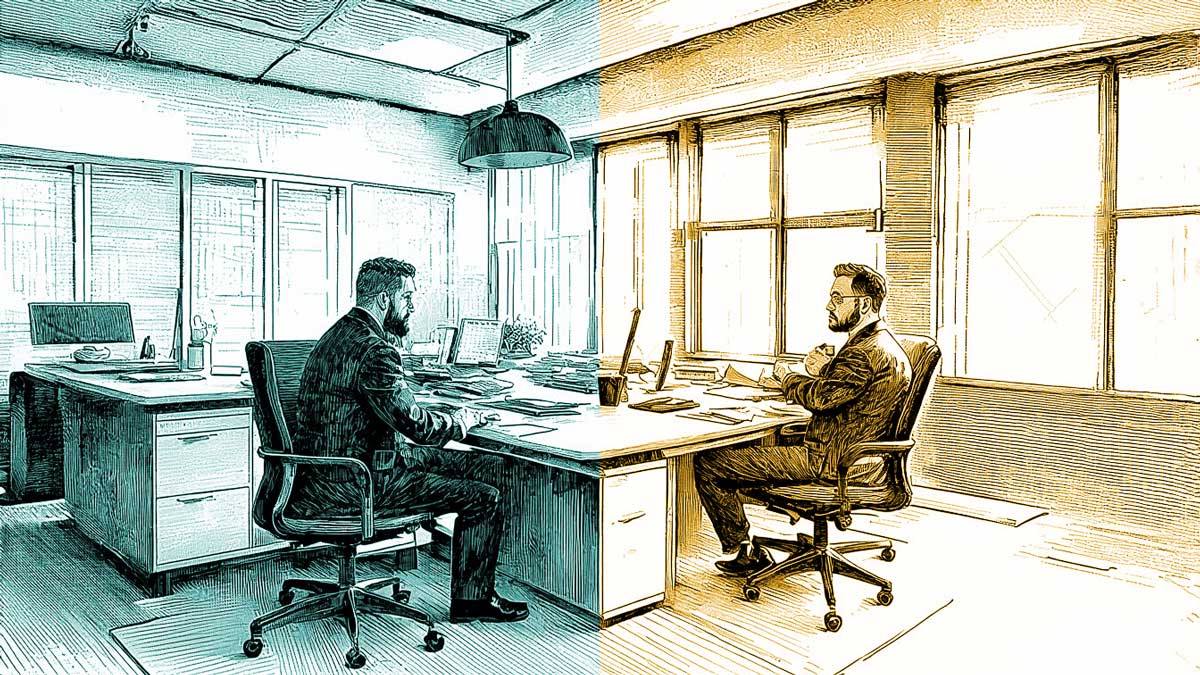
In nature, the spectrum of natural lighting depends on many factors. The main ones are latitude, date, and time of day. In the morning and evening, the color temperature of lighting is lower, while in the middle of the day, it is higher. Artificial lighting can be even more closely aligned with natural lighting by imitating this feature. This technology is called Human-Centric Lighting (HCL). Another common name is "biodynamic lighting."
Light Regulates Biological Rhythms
When coming to work, a person usually starts by "ramping up," then in the middle of the day, their productivity reaches a peak. Before finishing work at the end of the day, they should reduce their activity somewhat to go home in a calm state and be ready for evening rest. Currently, in most workplaces, lighting parameters do not change over time. Therefore, in the morning, bright light is more irritating than invigorating, and in the evening, it does not allow one to relax.
HCL enhances productivity, reduces errors, and improves employees' health. The essence of the technology is that the light output and color temperature of fixtures in a room change according to a specific program, providing comfortable working conditions.
There are two approaches to designing HCL systems. One involves accurately imitating sunrise and sunset in a specific location. The other ties changes in lighting parameters to the start and end of the workday. Each has its own advantages and disadvantages. In general, HCL is a new field of science and technology, so new recommendations constantly emerge on what the light output and color temperature schedule should be.
Technical Implementation
To implement HCL, LED fixtures with tunable color temperature (Tunable White) are usually used. They should be controlled by one of the digital protocols, with the best option being DALI-2. Where fixtures have replaceable bulbs, HCL can be implemented by installing LED bulbs with Tunable White functionality. These bulbs are controlled by a wireless protocol, with the most common options being ZigBee and Bluetooth LE.
The system can be implemented based on a cloud service or a local controller. The advantage of a cloud service is lower equipment costs and the possibility for users to install and configure equipment themselves, or with the help of an electrician of even the lowest qualification. Additionally, the algorithms for changing lighting parameters are automatically updated in accordance with the latest scientific research. The drawback is reliance on Internet access. If it is unavailable for any reason, the fixtures become standard with a fixed color temperature. This is used in homes and small offices.
A solution based on a local controller is more expensive. Its installation and configuration generally require the involvement of qualified specialists. However, it functions regardless of Internet access. This is used in large offices and industrial settings.
HCL is more expensive than a regular lighting system, but, as experience has shown, this technology quickly pays for itself. In addition to offices and factory floors, HCL has already found application in healthcare facilities, nursing homes, transport infrastructure objects, educational institutions, and home interiors.






